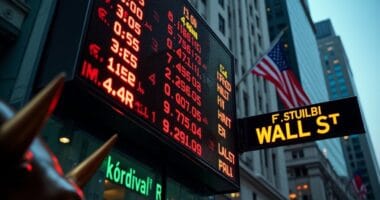The U.S. trade deficit exploded to $140.5 billion in March 2025, triggering chaos in financial markets. Stocks plummeted as panicked investors fled to bonds, driving Treasury yields down sharply. The dollar weakened against major currencies while agricultural exports tanked, with Oregon’s ports seeing a brutal 51% drop. Wall Street’s having a meltdown, and new tariffs are rolling out in response. The full impact of this economic earthquake is still unfolding.

Global markets reeled today as the U.S. trade deficit surged to a jaw-dropping $140.5 billion in March 2025.
The 13% increase from the previous month sent shockwaves through financial markets, with stocks taking a nosedive and investors scrambling for safety like cats from a water spray.
The immediate market reaction was brutal.
Stock markets plunged across the board, with technology and manufacturing sectors leading the bloodbath.
Treasury yields dropped faster than a hot potato as investors rushed to park their money in bonds.
So much for market stability.
The deficit’s impact reflects America’s ongoing role as provider of the world’s global reserve currency.
Agricultural exports took a particularly nasty hit, contributing substantially to the deficit’s expansion.
It seems American farmers just can’t catch a break these days.
The combination of recent tariffs and disrupted trade flows has left many scratching their heads – and checking their wallets.
Oregon’s port experienced a devastating 51% drop in exports.
The U.S. dollar didn’t fare any better, weakening against major currencies as forex traders digested the news.
The greenback’s decline sparked concerns about import costs and potential inflation – because apparently, we needed more economic worries to keep us up at night.
Business cycles typically show how such market disruptions can ripple through the entire economy.
Market volatility metrics shot through the roof, reflecting the kind of uncertainty that makes investors reach for their antacids.
Bond prices rose as yields fell, suggesting that many expect the Federal Reserve to step in and do… well, something.
The deficit news has reignited the age-old debate about whether trade imbalances signal economic strength or weakness.
Sure, persistent deficits can indicate strong consumer demand and foreign investment confidence in U.S. markets.
But try telling that to politicians gearing up for another round of protectionist rhetoric.
Policy responses have already begun, with new tariffs rolling out faster than a California wildfire.
Meanwhile, economists and policymakers are busy arguing about the long-term implications for competitiveness and employment.
One thing’s for certain – with deficits like these, nobody’s sleeping easy on Wall Street tonight.





